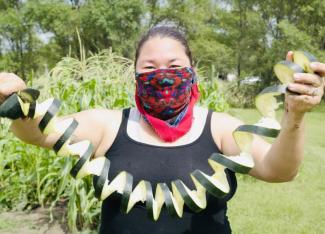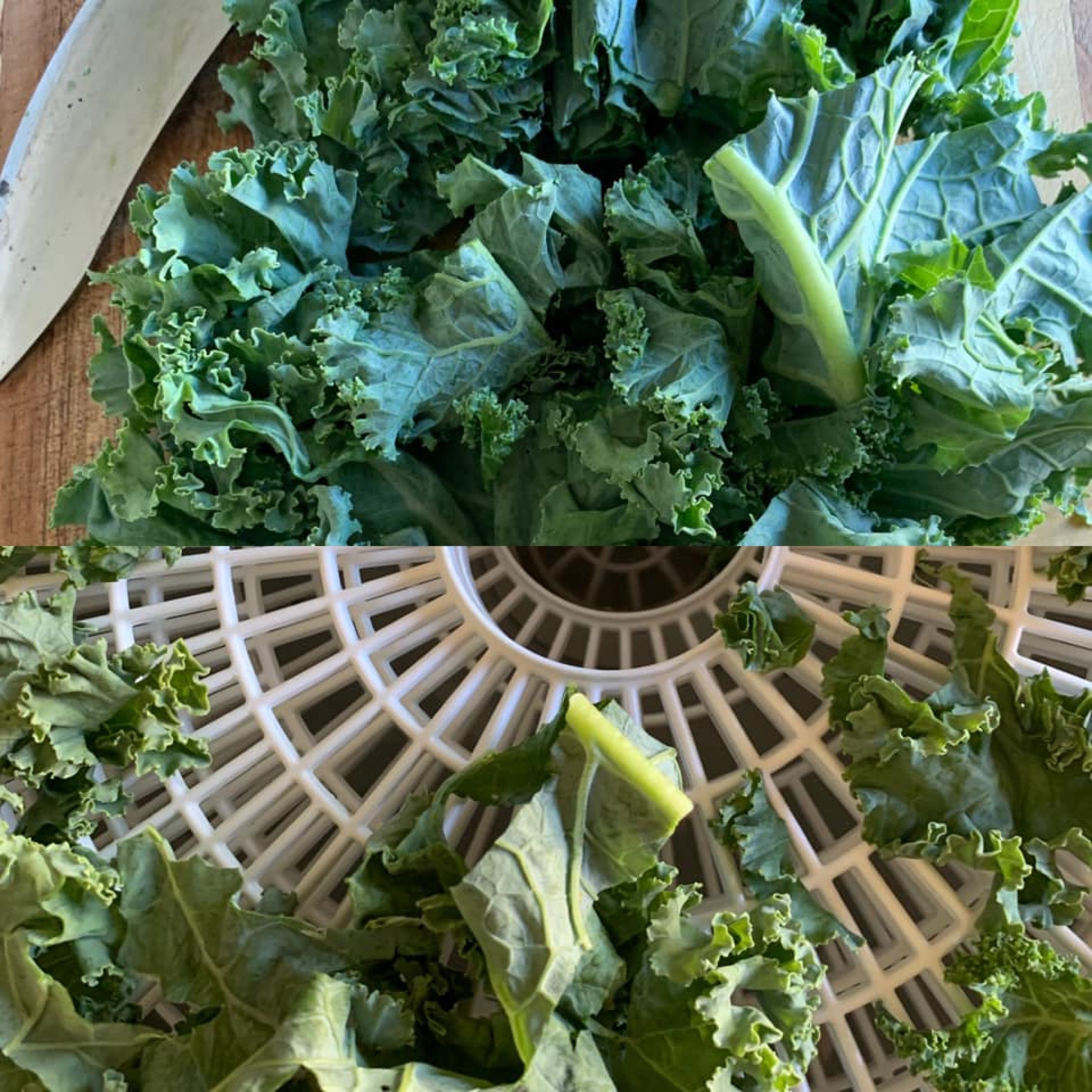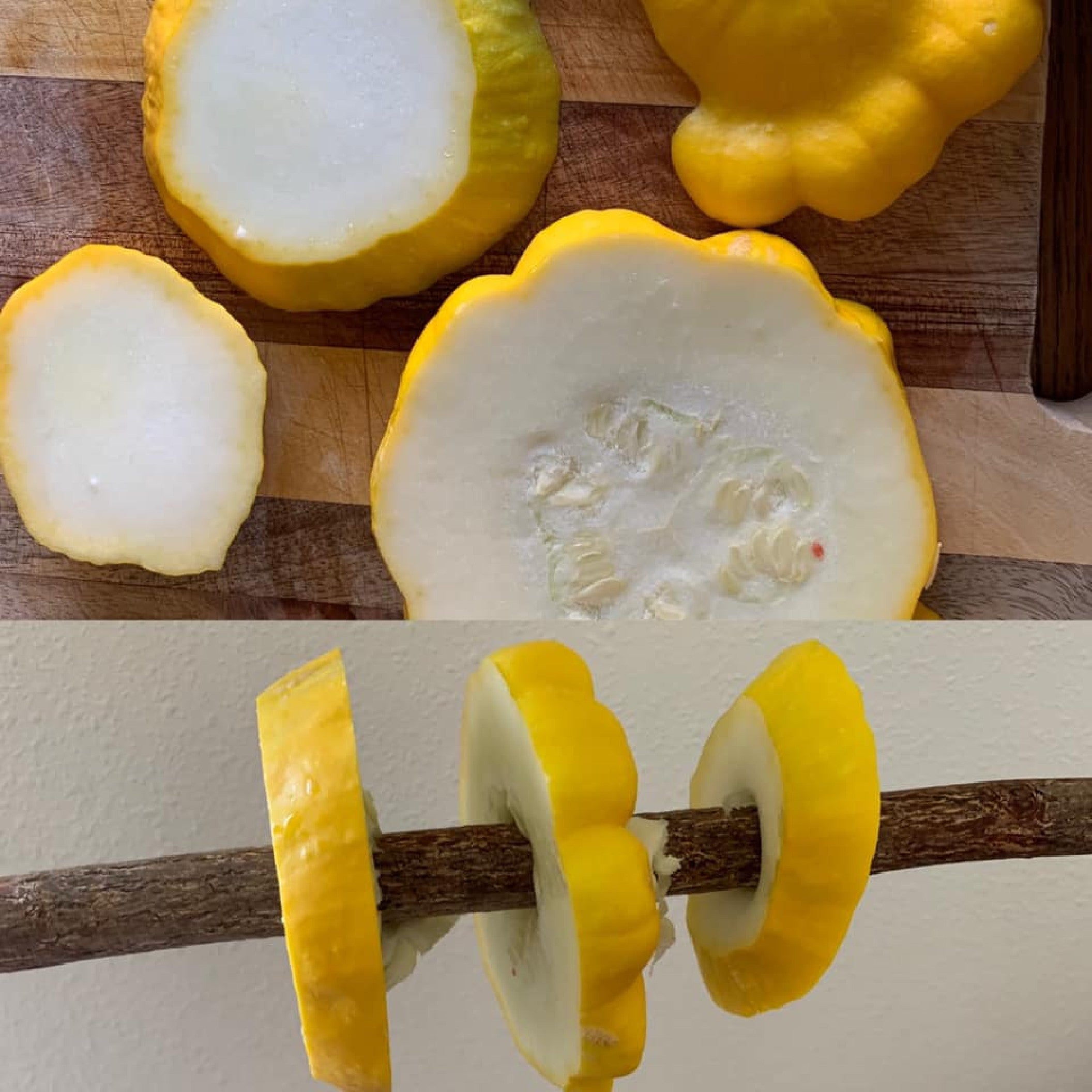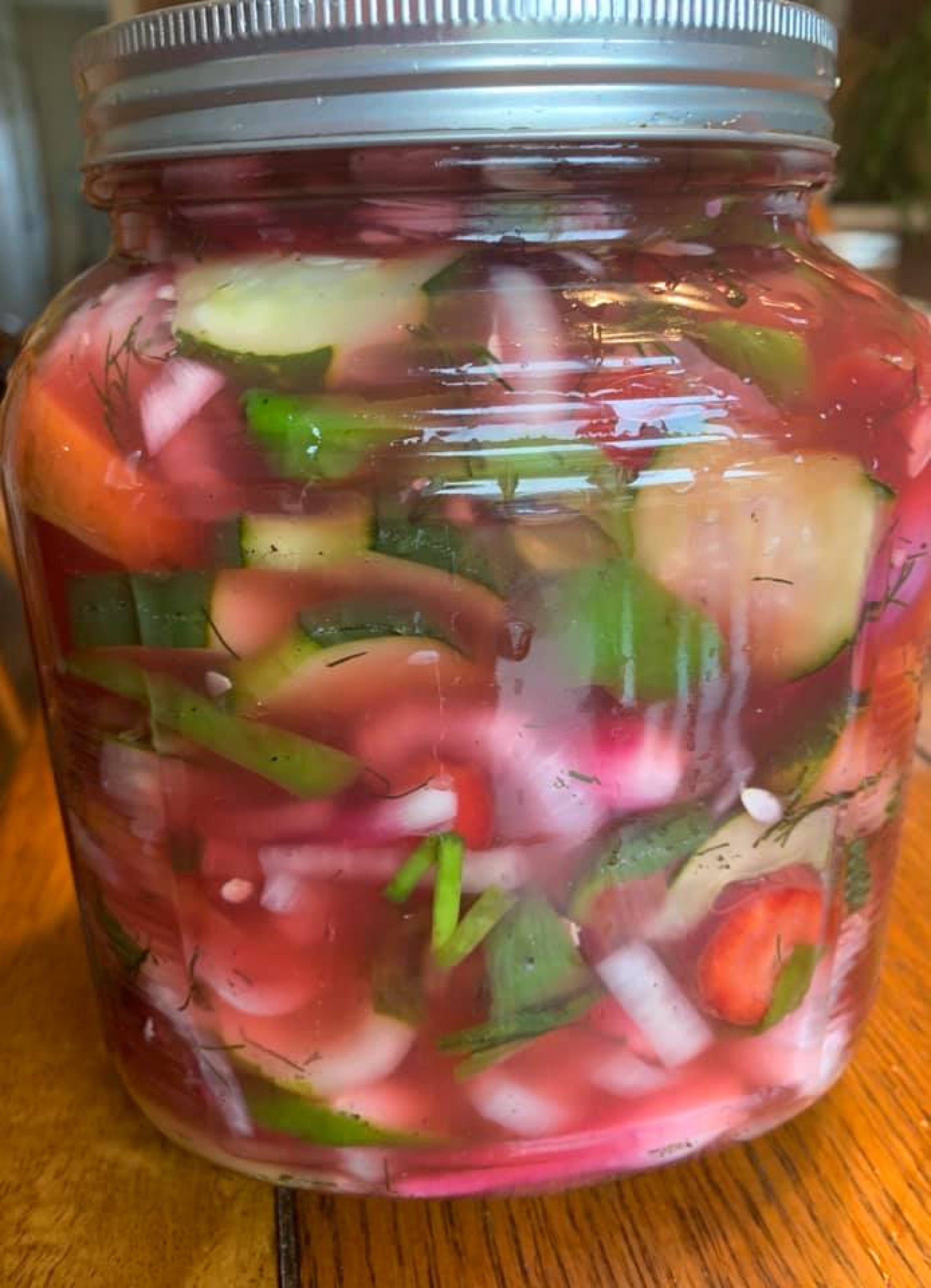
When we say “food is medicine,“ we do not mean it as a metaphor or a catchphrase. If we eat the things that we are supposed to be eating, we will not suffer from the diseases of colonization. Traditional foods have the medicine that our body needs to prevent and heal illness. These foods do not just feed and heal us physically, but also mentally, spiritually, and emotionally. Traditional food is spirit food.
Fermented foods are essential to keeping us healthy during the age of COVID-19. Lightly fermented foods like maple vinegar and wozapi (berry sauce) are amazing for restoring and maintaining a healthy gut microbiome. Other fermented foods like sauerkraut, kimchi, and low sugar yogurt are important in the fight against COVID-19.
Many of us have been preparing for lean times. I believe that each individual should have enough food to last for four months minimum. If you have a family of five, that’s quite a bit of stored food. So how do we do this? What kinds of preservation methods are going to work?

Drying plants and meat is the simplest method of food preservation. It’s exactly what it sounds like—allowing air to dry food for long term storage. Different plants dry at different rates. Foods like apples and squash can be cut thinly, whereas nettles and other herbs can simply be dried on paper towels or cookie sheets or hung up. I dry everything, including summer and winter squash, nettles, lambs quarters, onions, ferns, berries, apples, root vegetables, echinacea, and sage, simply by laying them out on paper towels or by hanging them in bundles throughout my home or garage.
For air drying meat, my family sets up an insect screen and dries meat inside the screen on laundry racks or racks made from tree branches. Lots of people do not realize that you can safely air dry meat, but Indigenous Peoples have been doing this for thousands of years. You do not even need smoke, although I love the flavor of smoked meat and it certainly keeps the bugs away if you do not have an insect-proof area.
If you have a bunch of carrots from your garden, instead of composting all the carrot tops, you can dry them and use them as a parsley substitute. Put them in all of your homemade spice blends, which you can add to absolutely everything from macaroni and cheese to roasted chicken. If you have an abundance of apples on your tree, apple chips are delicious and easy to make. You can eat them as a snack, or you can reconstitute them to use in all kinds of recipes, including a “dried apple pie” that will brighten any freezing cold winter day. If you have tons of zucchini, just cut it up and dry it so that you can have a filling, nutritious, and delicious addition to pasta dishes, soups, and gratins.
Dehydration is a faster and warmer way of drying foods, medicines, and meat. I use a dehydrator when I’m in a hurry for certain fruits and thicker veggies or some quick jerky, and when my countertops, ceiling, and walls just do not have enough room to hold more. Dehydration produces a different texture for many plants. Apple chips, for example, are more leathery and soft when air dried. If you want them a bit crunchy, a dehydrator works perfectly. I’ve never been able to air dry banana chips, but dehydrated banana chips are amazing. All you do is slice them and put them in the dehydrator.
Dried soup mixes like corn (I prefer dried hominy), peas, carrots, celery, or potatoes can all be dried and then mixed together so that you can just add a scoop to your next soup or stew. These are simple, yummy, and you can cater these mixes to your specific tastes. I add tons of dried garlic.

Dried rice and beans are essentials in my kitchen and I love that they make a complete protein in the absence of meat. Plus, you can add anything to a bowl of beans and rice to make a meal: nettle, dandelion, hot chilies, or a scoop of dried soup mix. If you’re drying your homegrown beans, harvest the entire plant after the vines have turned completely brown and lay them on a tarp to dry in the sun until completely dried (this could take a week or more). Shell the beans into a shallow bowl or bucket (I use foil turkey roasting pans), and allow the beans to dry even further before packing them for long term storage. My friends in Mexico taught me to do this and I have never had a problem with moldy beans.
Storing wild rice for decades can be kind of tricky. It’s already parched and dried, but it will remain edible for three to five years. You can extend the shelf life of wild rice by doing a second parching, and also by packing it into bags with an oxygen absorber.
Have you ever tried freeze dried vegetables and fruits? In my opinion, freeze dried foods are infinitely more tasty than air dried foods and they last for up to 25 years. Freeze dried food also retains more nutrients than dried or dehydrated food. The downside is freeze dryers are expensive, but is an excellent way to preserve the bounty of your foraging, gathering, and gardening.

“Refrigerator pickles” will last three or four weeks.
I recently noticed that there were some vegetables on my kitchen counter that had to get eaten or preserved right away. I cut up all those veggies: cucumbers, onions, rainbow carrots, green peppers, dill, and a single leftover jalapeño. In a separate bowl I mixed apple cider vinegar, maple sugar, and a little salt, then I poured it on top of the vegetables. I left it in the bowl on the kitchen counter overnight. The next morning, I put it all in a jar and stuck it in the fridge. These “refrigerator pickles“ will last three to four weeks.
A note about long term storage: oxygen is the enemy of food preservation. If you want to preserve dried, dehydrated, or freeze dried foods for the long term, you might want to invest in some mylar food storage bags and oxygen absorption packets. Your dried foods can last up to 30 years like this, and they’ll be as fresh as the day you stored them. We all need to learn to preserve foods and medicines without the use of electricity. I certainly love to use a dehydrator, a freeze dryer, and even a freezer, but none of these methods will be useful in the case of mass electrical outages. Plus, isn’t it nice to preserve the bounty of Mother Earth without the use of fossil fuels? When you know how to do things, you feel secure, safe, and wealthy.
We have “independence anxiety” because capitalism has conditioned us to be afraid of the natural world. Teach your children so that they’ll always have these skills and they’ll never have fears about food scarcity. None of this is hard; it’s just a matter of doing it. Not only will you feel empowered, but you’ll also be honoring your ancestors, who had to do these things to survive.
Recipes
Simple Sauerkraut
• 2 medium heads of fresh cabbage
• 1/4 cup kosher sea salt • Optional (for flavor): add caraway seeds, chopped jalapeño, red chilies, or whole garlic cloves
• Glass jars with tight lids
Chop the cabbage as desired. Cover with the salt and mix in, grinding the salt into the cabbage with your hand. Stuff as tightly as possible into jars and seal. Keep on the kitchen counter for a few days to speed up the fermentation process.
Easy Kimchi
• 2 pounds Napa cabbage cut into bite size pieces
• 1/2 pound daikon radish
• 1/4 cup sea salt
Salt the cabbage and daikon. Let it sit for 2–3 hours. Drain well.
Then mix together:
• 3 tbsp garlic minced
• 2 tsp ginger minced
• 1/2 cup chopped green onion
• 2 tbsp salted shrimp or fish sauce (optional)
• 3–8 tbsp kimchi pepper powder, depending on how spicy you want it.
• 3–4 tbsp water (enough to make a paste)
Mix the above ingredients into a thick, but not dry, paste. Mix it into the salted cabbage/daikon. Stuff as tightly as possible into clean glass jars. Leave out to ferment.
— Linda Black Elk (Korean/Mongolian/Catawba descendant) is an ethnobotanist specializing in teaching about culturally important plants and their uses as food and medicine. She is Food Sovereignty Skills Instructor at United Tribes Technical College. She is the author of Watoto Unyutapi, a field guide to edible wild plants of the Dakota people.
All photos by Linda Black Elk.
